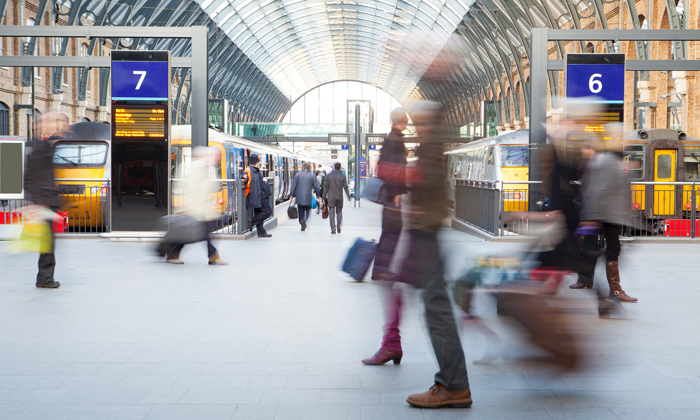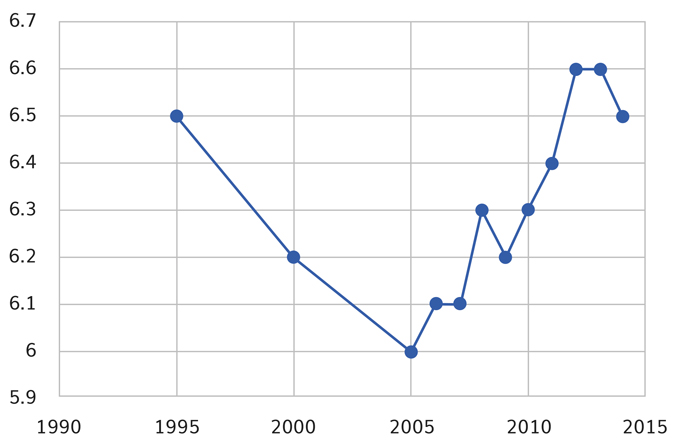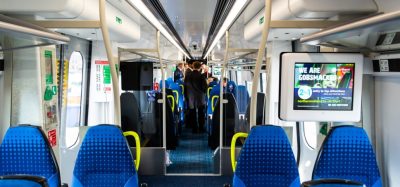The value in satisfying the passenger
Posted: 11 August 2017 | Ilja Lorenzo Volpi, Libor Lochman | No comments yet
With growing rail passenger numbers across Europe, Libor Lochman, Executive Director and Ilja Lorenzo Volpi, Head of Policy at the Community of European Railway and Infrastructure Companies (CER) both explore what the organisation’s members should do to ensure passengers are satisfied and how important, really, is the ‘passenger experience’?


Make rail the number one choice for travellers across Europe
Passenger rail transport in Europe has been recording a year-on-year market-share increase for the last decade. With roughly nine billion rail trips made annually across the EU and with a 1.5% average growth rate in demand, it is very well placed to remain an essential mobility driver for European citizens; be it as the backbone of urban transport systems or as an essential link for regions throughout Europe.
However technology and new mobility patterns are constantly evolving. Travel options passengers can choose from are on the rise. CER members are well aware that passenger experience is the decisive factor when customers pick their transport mode. It is the ambition of the railways to continually embrace technological and societal changes, in order to innovate and better meet the need of rail customers, in a highly competitive environment. In parallel, however, the sector’s efforts will not yield the expected positive results unless the legislators take full responsibility for addressing the existing imbalanced intermodal framework conditions.
Improving the customer experience
It is a given that railways are constantly striving to have all their trains and services meet the highest standards so as to further improve their competitiveness and attract customers. Depending on whether the customers travel on long-distance, high-speed, regional or commuter services, they usually value a combination of many quality factors, such as journey time, reliability, frequency, flexibility, and customer information.
One aspect though is recognised as key – the accelerated development and integration into the railway offer of innovative products using digital technologies. From the perspective of a sector relying on physical assets, it is a challenge to make the most out of the world of non-material assets. However, ‘digitalisation’ is nothing new for rail passenger operating companies. It represents a challenge the sector took up many years ago.


Figure 1: Rail passengers – modal share in land transport (in %, rail vs. road)
Door-to-door customer services and integrated ticketing
CER members are putting significant effort into developing seamless door-to-door customer services and integrated mobility platforms and tools, in order to offer increased added value while meeting the customers’ individual requirements and expectations. Elements of service quality introduced by railway undertakings over the past years include advanced route planning, real-time traffic information, mobile applications and related push notifications.
In parallel, increasing the simplicity with which customers can buy train tickets via innovative distribution and sales channels is essential. The availability of through-ticketing systems are also a vital part of the solutions progressively being developed for customers who are planning journeys using transport services from multiple operators. As part of this ongoing evolution, in 2016 railways and ticket vendors completed a set of distribution specifications – the so-called Full Service Model (FSM) – which will reshape the way European railway products are distributed. Not only will it be an enabler of better rail ticketing services throughout Europe, ultimately complementing the already existing European TAP TSI standards, but it will also contribute to enhanced service quality, from the provision of pre-journey information to after-sales support.
Logically, FSM specifications have also been designed to facilitate the distribution of multi-modal products. Train operating companies indeed want to continuously positon themselves as mobility integrators in the intermodal mobility chain, since the majority of train journeys involve another mode of transport to and from the station. With 83% of Europeans living within 30 minutes of a railway station, the ambition is to increasingly offer integrated mobility platforms and end-to-end customer services, coupled with good connections and interchanges with other transport modes. Train stations are therefore increasingly being designed as multi-modal terminals. Examples range from better car and bike rental facilities to improved cycling connections and bike parking facilities, which support cycling to and from stations.
Connected railways
Connectivity is another area in which CER members are making significant investments, for instance in order to offer internet on-board their trains, hence increasing opportunities for customers to spend their travel time productively through access to business networks and information.
Connectivity is a strong customer expectation and a challenge the sector has seriously taken up, despite the hurdles that increasing the access to internet entails. The challenge is now to shape a relevant policy framework for rail connectivity, to find incentive for mobile service operators to ensure the relevant connectivity across the entire rail network. Internet access for passengers must be possible on all the different railway lines, whether conventional or high-speed, situated in densely populated or rural areas.
This work stream is part of the long-term objective of CER members to achieve fully ‘connected railways’, with highly available, reliable and stable network connectivity, while meeting the key requirements of the railway system, such as safety, ensuring coverage in tunnels, protecting GSM-R and ERTMS installations and avoiding or mitigating any form of interference, local restrictions and cyber-threats.
Conditions for success
CER, in its role of representing the interests of the railway sector towards European policymakers, has asked in the past years for an open and fair Single European Rail Area, where all players and market forces lead towards ever more efficient services for long-distance passengers as well as daily commuters. The work done on both pillars of the Fourth Railway Package will certainly bring improvements in the near future: domestic markets will be open to competition not only on paper, and a strengthened EU Agency for Railways will boost rail interoperability while ensuring the highest level of safety.
However, while the sector is working hard to increase railways’ competitiveness and to attract more passengers to rail, policymakers need to play a key role in ensuring that fair framework conditions support rail’s growth and ability to deliver on the EU’s modal shift targets. Intermodal competition is increasing and it is well known that the rail sector has the highest social, safety and environmental standards compared to other transport modes – which go hand-in-hand with cost-related distortions between rail and other transport modes. This is why we are looking with hope at a number of legislative dossiers that are expected to be discussed during 2017 by the EU institutions, in particular the ‘Europe on the Move’ package. This initiative was published by the European Commission on 31 May 2017 and the sector acknowledges the positive elements in the Commission’s proposal that are expected to encourage Member States to consider the societal cost of road use more accurately. However, to come closer to the Transport White Paper targets and commitments, more is needed: fair, distance-based road charging everywhere in Europe. Only then can railways and other sustainable modes fully realise their potential to make European transport greener.
At the same time the sector needs efficient and well-maintained rail infrastructure, which remains a key prerequisite for railways to be able to deliver and compete by offering the most reliable, safe and environmentally-friendly means of transportation. In the context of the European Parliament’s regular budget review – the so-called Multiannual Financial Framework (MFF) – CER continues to highlight the case for rail infrastructure projects as a key driver to create wider economic impacts. Improved infrastructure results in better travel times and increased capacity, which in turn lead to broader benefits, for instance by creating more working opportunities for employees or increasing the attractiveness of city centres.
CER is also intensively discussing with both decision-makers and passengers’ associations, policy measures addressing the security and protection of rail passengers in the context of the ongoing terrorism threat. The sector has firmly engaged with passengers’ associations to jointly discuss and identify concrete and appropriate measures to enhance security without impacting on the existing flexibility of rail as an open-access transport mode – the feature our customers value so much and which constitutes a pillar of the sector’s competitiveness.
Biography
Ilja Lorenzo Volpi is Head of Policy at the Community of European Railway and Infrastructure Companies (CER), responsible for a wide range of advocacy campaigns. He is also the Chair of CER’s Customer Liaison Group (CLG), the platform where railway representatives and passengers’ associations discuss rail customers’ travel experiences and related EU policies. Prior to joining CER, Ilja worked in a Brusselsbased consultancy. Ilja holds a post-graduate degree in public affairs management from ISMaPP (Paris/ Brussels) and a Master’s degree in diplomacy from the University of Turin.
Libor Lochman has been Executive Director of the Community of European Railway and Infrastructure Companies (CER) since 1 January 2012. Libor graduated at the Transport University in Zilina and has a doctorate in electronics from the West-Bohemian University Plzen. He has a strong background in Control-Command and signalling systems. Prior to his role as CER Deputy Executive Director and Lead of Technical Affairs (2007-2011), Libor acted as Director of the Railway Test Centre – a facility for testing European rolling stock, infrastructure and signalling components in Prague (2000-2005). Libor joined the Advisory Board of Global Railway Review in January 2013 (then known as European Railway Review).
Issue
Related topics
Passenger Experience/Satisfaction, Rail Fares/Ticket Pricing
Related organisations
Community of European Railway and Infrastructure Companies (CER)






